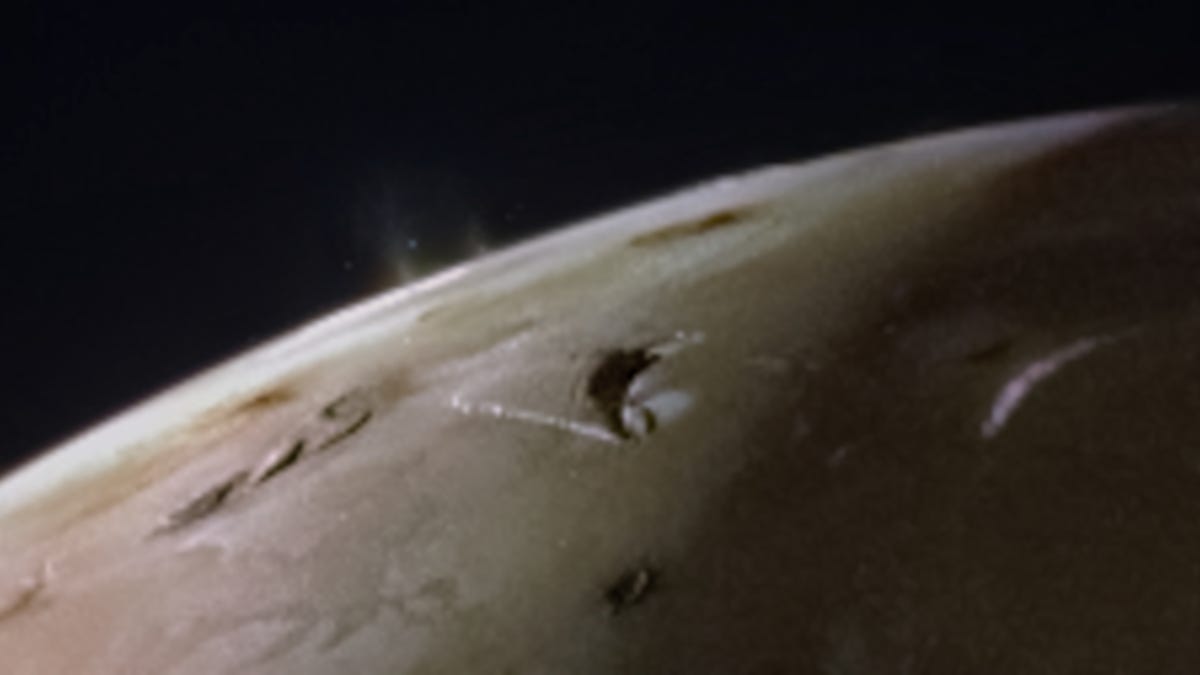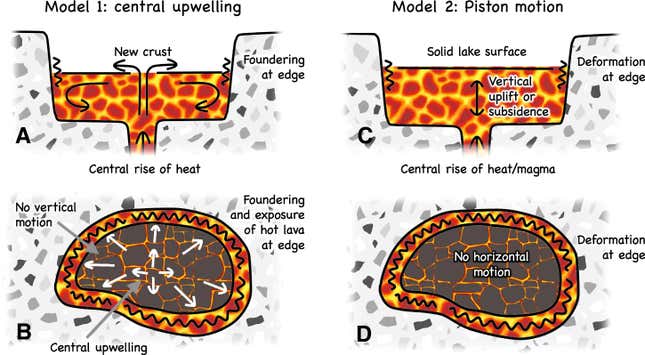
 Image: NASA/JPL-Caltech/SwRI/MSSS Image processing by Andrea Luck (CC BY)
Image: NASA/JPL-Caltech/SwRI/MSSS Image processing by Andrea Luck (CC BY)
It’s not a big moon relative to a few of its neighbors, but Jupiter’s Io is exceedingly active, with volcanoes by the hundreds spewing lava plumes dozens of miles above its surface, per NASA. Infrared tech aboard the space agency’s Juno probe mapped two such eruptions in February, returning valuable data on the mysterious happenings beneath Io’s surface. Researchers shared their insights on the matter in a paper published last week.
Suggested Reading
X-Rays Reveal Gnarled Remains of Ancient Roman Military Sandal The 10 Most Entertaining Horror Movies on Netflix Right Now Black Panther and Terminator Zero's Creators Are Teaming Up for a New Time-Travel Movie Florida Family Takes NASA to Court Over Home Damaged by Space Trash CC Share Subtitles- Off
- English
Suggested Reading
X-Rays Reveal Gnarled Remains of Ancient Roman Military Sandal The 10 Most Entertaining Horror Movies on Netflix Right Now Black Panther and Terminator Zero's Creators Are Teaming Up for a New Time-Travel Movie Florida Family Takes NASA to Court Over Home Damaged by Space Trash CC Share Subtitles- Off
- English
From around 2,400 miles away, the probe’s Jovian Infrared Auroral Mapper (JIRAM) instrument “revealed that the whole surface of Io is covered by lava lakes contained in caldera-like features,” explained Alessandro Mura, a Juno co-investigator from Rome’s National Institute for Astrophysics. On Earth, a caldera is a crater formed by a collapsing volcano. Io is about a quarter the size of Earth by diameter, and just a bit bigger than Earth’s moon.
AdvertisementRelated Content
Juno Spacecraft Gears Up for Closest Look at Jupiter's Tormented Moon Juno's Best Images of Jupiter and Its Moons (So Far)Related Content
Juno Spacecraft Gears Up for Closest Look at Jupiter's Tormented Moon Juno's Best Images of Jupiter and Its Moons (So Far)“In the region of Io’s surface in which we have the most complete data, we estimate about 3% of it is covered by one of these molten lava lakes,” said Mura. Juno’s JIRAM tool came via Italy’s space agency, Agenzia Spaziale Italiana.
Advertisement Graphic: Alessandro Mura et al (Other)
Advertisement
Graphic: Alessandro Mura et al (Other)
Advertisement
According to Mura, lead author of the Io paper, the probe’s flybys expose the most common type of volcanism on Jupiter’s hottest moon — “enormous lakes of lava where magma goes up and down.”
He added, “The lava crust is forced to break against the walls of the lake, forming the typical lava ring seen in Hawaiian lava lakes. The walls are likely hundreds of meters high, which explains why magma is generally not observed spilling out.”
Researchers are still poring over the data collected by Juno’s Io flybys, which occurred in February 2024 and December 2023.
 Psst! Do you accept cookies?
Psst! Do you accept cookies?
What's your thoughts?
Please Register or Login to your account to be able to submit your comment.